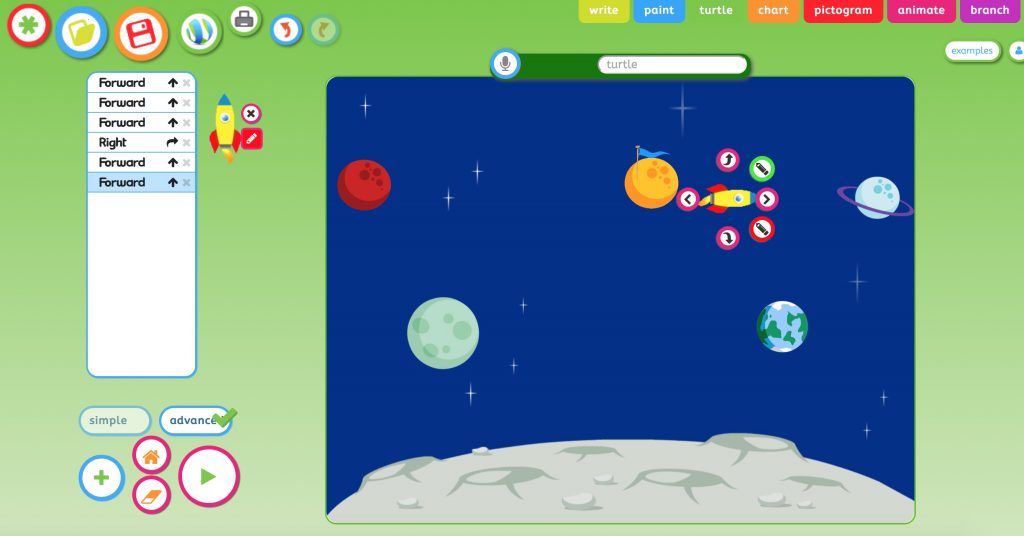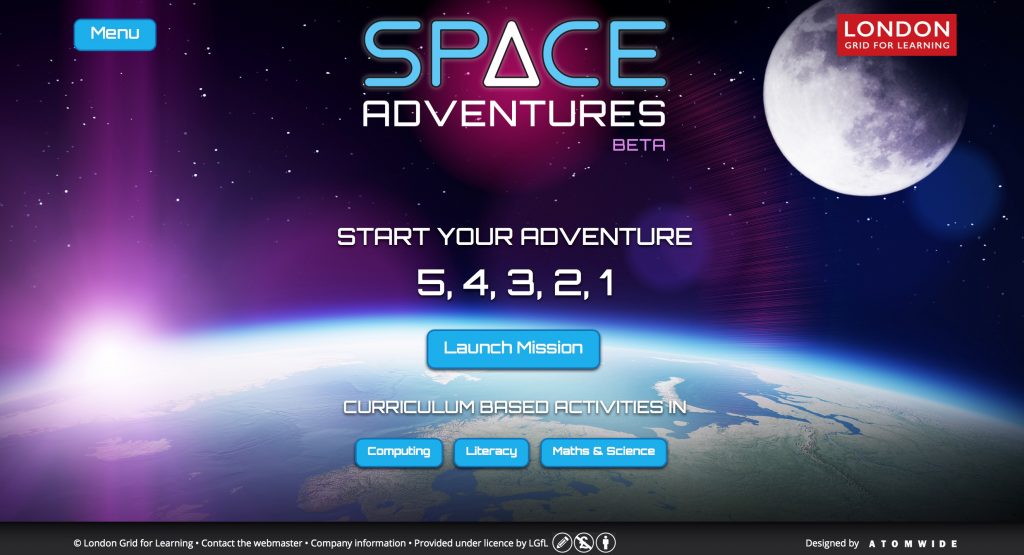Curriculum Blog
Code Week EU 2018
“Everybody in the world should learn to program a computer, because it teaches you how to think”— Steve Jobs
Next week is the start of Code Week EU If you are interested in bringing coding to your classroom but you don't know where to start do not worry as we have plenty of LGfL content that can energise the teaching of computing in your school.
EU Code Week is a grass-root movement run by volunteers who promote coding in their countries as Code Week Ambassadors. Anyone – schools, teachers, libraries, code clubs, businesses, public authorities – can organise a #CodeEU event and you can even add it to the codeweek.eu map to show your support.
Coding is for all, not just for programmers. It’s a matter of creativity, of computational thinking skills, of self-empowerment, nothing boosts your problem-solving skills like learning how to program a computer, learning to code boosts your attention to detail, having a high level of focus can improve any part of your life!
Our National Curriculum computing programmes of study tells us “A high-quality computing education equips pupils to use computational thinking and creativity to understand and change the world” Coding isn’t just the act of programming code to control a device, it’s about being able to identify and understand problems or needs in the real world and using innovative thinking and creativity alongside logic reasoning to improve the world around them.
Computing is about teaching students about what is behind their screens and boxes and how the modern world works. With this knowledge, they can begin to see the possibilities so that they can create innovations that could one day change the world.
I spoke to Danny Young the Managing Director of Just2easy about the importance of learning to code and children developing digital skills.
“Being digitally literate is becoming increasingly important for the future of our children and Just2easy have 2 offerings to help in that regard, j2code is a set of differentiated coding engines designed for ages 3 to 13, we made sure that there is was no need to have software to install and everything is accessed via your USO login. We also designed j2data which offers a different take on digital literacy, focusing on the data aspects, in particular, sorting, filtering and searching data”
J2code offers a range of coding languages to enable to explore coding, each coding language offers three detailed lesson plans, each designed as a starting point for a series of lessons. Children new to coding, whether at year 1 or year 2, will need to work through the basics, starting with lesson 1. Year 2 children should be able to move through the first two lessons much more quickly.
At the end of each lesson plan there are suggestions for further activities. It will help the children’s learning experience if they are given plenty of time for consolidation and adaption of skills learnt before moving on to the next lesson plan. J2Code is designed to be open ended rather than prescriptive in order to encourage children’s creativity and problem-solving skills.
To help both teachers and students Just 2 Easy tool suite have included a glossary for the various computational terminology used, there is also a link to this in each lesson plan.
JIT is a turtle-based coding language in which you can code freely or use spite and background templates to create simple animations for KS1.
Visual is a block based coding language in which you can freely code to create more complex coding outcomes for Upper KS1 and KS2.
Logo is a script-based platform that you use to complex procedures perfect for upper KS2 and can be used in KS3.
Just 2 Easy tool suite also offers a block based or script based platform for the micro:bit what is great about this platform is that it offers 3 levels of differentiation, adding operators, variables and procedures, when needed.
J2data enables schools to meet the data handling requirements of the national Computing curriculum for KS1, KS2 and KS3. Starting with the youngest learners using pictogram, then progressing through chart, branch and database, there is a tool appropriate for every age from 4 years up. All the coding and data handling files can be sent to the Blogging platform built into the Tool suite System. This unique element significantly enhances the scope for broadening the audience and enables students to peer review each other’s code.
All the coding and data handling files can be sent to the Blogging platform built into the Tool suite System. This unique element significantly enhances the scope for broadening the audience and enables students to peer review each other’s code.
Python Tutor and Web Tech tutor offers 50 coding projects presented in single simple stand-alone lessons. Students understanding is initially developed at a conceptual level by allowing them to drag and drop parts of the code, but later they can refine their skills with specific code creation in activities.
Students watch a short introductory video. Which presents a key coding concept or problem. They then can carry out a series of related short tasks using the software, after each task is complete, the software will then present the next task in the unit.
When using these resources, it is important to understand that simply using this resource in isolation will not give your students the depth and breadth of computational skills needed to become independent Computational thinkers.
Using and moving code within these resources does create a solid scaffold for students to explore unfamiliar concepts and gives them quick on-screen results but it’s important for students to have freedom to create code outside of this scaffold, the idea of the resource is not to “copy code” but to gain practical knowledge of key concepts.
Computing Inspector and advisor for Hampshire Inspection and Advisory Service Phil Bagge talks about using coding schemes of work:
“I often start with examining the module and asking what computational thinking and problem-solving attitudes it is building I then explore ways that they might adapt that planning, chopping the instructions up, asking the students to predict what parts will do before they use them”
Looking for a creative way to introducing coding to KS2? Space Adventures is unique and engaging cross curricular resource is based around an original story commissioned by LGfL by the award-winning author Cath Howe.
It features dramatic video content and a virtual reality experience linked to the narrative. The aim is to draw the learner into the turn of events that threats the ability of our intrepid astronaut Tazz to return safely back to earth. Will her on board computer be enough to get her back safely or will she need to draw on her maths and science knowledge and understanding?
The resource features a comprehensive set of resources for Maths, literacy and Science and a Computing unit created my Max Wainwright, author of the popular espresso coding resource for primary schools.
There are two units, which are designed to teach computing concepts in line with the Computing Curriculum, Unit 1 is aimed at Year 4/5 with unit 2 being aimed at more experienced pupils who will have a good exciting coding skills, there are six lessons in each unit.
Each lesson contains:
- A presentation that can be used by the teacher with the class on an IWB.
- An introduction video.
- A video demonstrating the code used within the lesson.
- A step by step PDF.
- Extension Activities
- An example of Scratch file for teachers to explore.
It is important to remind ourselves that introducing young people to coding gives them an appreciation of what can be built with technology. Our students are surrounded by devices controlled by computers in their everyday lives. To understand coding, is to understand how our devices work, and being able to imagine new devices and services is essential to inspire and push our students to solve the problems of the future, it was with this idea we created ‘History of Computing’
Doron Swade (MBE) Formerly Curator of Computing, and Assistant Director & Head of Collections, Science Museum, Tells us:
“The resource promotes the idea that by understanding our digital heritage we can better understand our digital future”
The History of Computing resource features unique materials to help understand how British computing developments have influenced the world we all live in. It also provides a wide range of materials to show how British innovation in Computing Continues to impact on our world today and shape our tomorrow.
The resource features:
- Unique video and photographic resources from the National Museum of Computing at Bletchley Park.
- An expert insight into the iconic British Computing systems from the past 70 years.
- Curriculum material created by practising Computing teachers all mapped out the National Curriculum.
The video materials is used to support a broad range of complete lesson activities to cover Key Stage 2 to 5, however teachers are encouraged to use and modify the suggested activities and tailor them to the needs of the students and curriculum.
Here are two quick examples of how I modified the lesson plans within the unit “A Brave new world” for a year 5 group with little or no experience of computing.
First let’s look at the lesson about building a computer, My students used an animation app called Chatterpix Kids (but you could use Morfo or our very own j2e5) to create simple animations of parts of a computer in which the animation tells you what the part does in relation to the whole computer.
[video width="768" height="768" mp4="https://curriculumblog.lgfl.net/wp-content/uploads/2017/10/IMG_0057.mp4"][/video]
My second example is with the Code breaking lesson, I used the lesson plan and video to explain the historical significance of code breaking and then used ‘the explaining binary resources’ from the wonderful website CSunplugged for children to explore how computers use a special type of code to communicate with each other.
Alongside History of computing we also have the Women in Computing resource which has been recently updated, WIC promotes the achievements of women in British Computing within the social context of the time, it explores the issue surrounding how and where their unique contributions have developed understanding within the computing industry and wider society.
‘These new updates reflect a broader range of women that have contributed to the development of computational thought in Britain. Each have their own unique story to tell within the societal context of the time, many of which were genuine trailblazers in progressing thinking and practice at the time’
Code week EU have created a range of resources to help you organise and run coding events easier, they have prepared different toolkits and selected some of the best lesson plans, guides and other resource which you can find here.
You could also use the many free resources found within Barefoot Computing Project These resources will help you improve subject knowledge and understanding within computing. Giving clear definitions, examples and progression across all primary school age and ability ranges.
We would love to see and share your amazing Code week EU projects, you can post them on Twitter or Facebook with the hashtag #codeweek







